This article focuses on the practical aspects of developing an SEO strategy that will help you gain initial organic traffic and potential customers. From the text you will learn, among other things, how an integrated approach to SEO can become the foundation of your online store’s success and why it is worth exploiting its potential. .
What is an SEO strategy?
.
An SEO strategy is a written set of tactics, actions and methods that, when implemented, will be designed to increase your website’s visibility in the organic results of search engines such as Google and Bing. .
An SEO strategy should include optimization of both on-page (so-called on-site) elements and external factors related to building domain authority (link building). A key aspect of SEO strategy is understanding and adapting to search engine algorithms, which are regularly updated to provide users with the most relevant and valuable results. An effective SEO strategyrequires constant analysis and adjustment of activities, monitoring keyword positions, analyzing website traffic and optimizing for SEO.
Why is an SEO strategy for a new online store important?
.
The main goal of such a strategy is to increase search engine visibility for specific keywords.
For new stores, SEO strategy is important because of several long-term benefits of SEO alone:.
-
- attracting traffic to the site,
.
-
- generating sales from organic traffic,
.
-
- building brand awareness,
.
- building trust and credibility with users.
By creating an SEO strategy for your store, any subsequent decisions, investments and changes to achieve better organic results will be made more sensibly and with a specific purpose. For new online stores, it is especially important to invest time and money wisely at the beginning, which are usually limited. Not being a specialist, it can often be very difficult to develop a strategy on your own, due to lack of experience. Hence, if you are planning to start investing in SEO, I recommend outsourcing the development of a strategy to an experienced expert as a start. By executing the right actions on the basis of a solid SEO strategy, you will start gaining organic traffic to your online store.
Where to start working on an SEO strategy for a new store?
.
The key to an effective strategy positioning an online storeis to clearly define the goals you want to achieve with SEO. For this purpose, you can use, for example, the SMART method..
The SMART method is a popular tool for formulating goals and objectives to be both effective and measurable. SMART stands for Specific, Measurable, Achievable, Relevant, Time-bound. Alternatively, the CLEAR, or OKR methods can be used here.
.
The goal may be to generate sales, attract new customers, increase brand awareness. In the case of a new store, in particular, we want to start selling quickly, so the main goal is to attract new customers. To do this, we need to increase visibility in organic search results for phrases related to product categories or products..
.
Our next step will be to define just those phrases..
Step 1 – Keyword analysis for a new store – core strategy
.
The most important element of any SEO strategy is a proper starting list of phrases. Keywordsare the queries a user types into a search engine for a specific purpose. It is worth noting that we have several types of queries due to their intent.
There are four main intents:.
-
- Navigation – phrases like YouTube, Allegro, Senuto.
.
-
- Informational – e.g. how to do key phrase analysis, how to choose a built-in dishwasher.
.
-
- Commercial – keywords: best running shoes, ranking vacuum cleaners.
.
-
- Transactional – such as iphone 15 pro max, Logitech wireless mouse, etc.
.
We will currently focus on transaction type phrases. These are generally characterized by high competitiveness. Unless we are dealing with a niche, we can safely assume that many companies are selling the same goods or services. Each of them wants to take the top positions. On the other hand, these are the phrases that attract traffic with the strongest purchase intent, and therefore the greatest chances of making a sale. .
For further analysis, we will use the keyword database from Senuto, and use the phrase “soy candles” as an example. In Senuto, we click “Keyword database”, then type in our keyword and select “Search”..
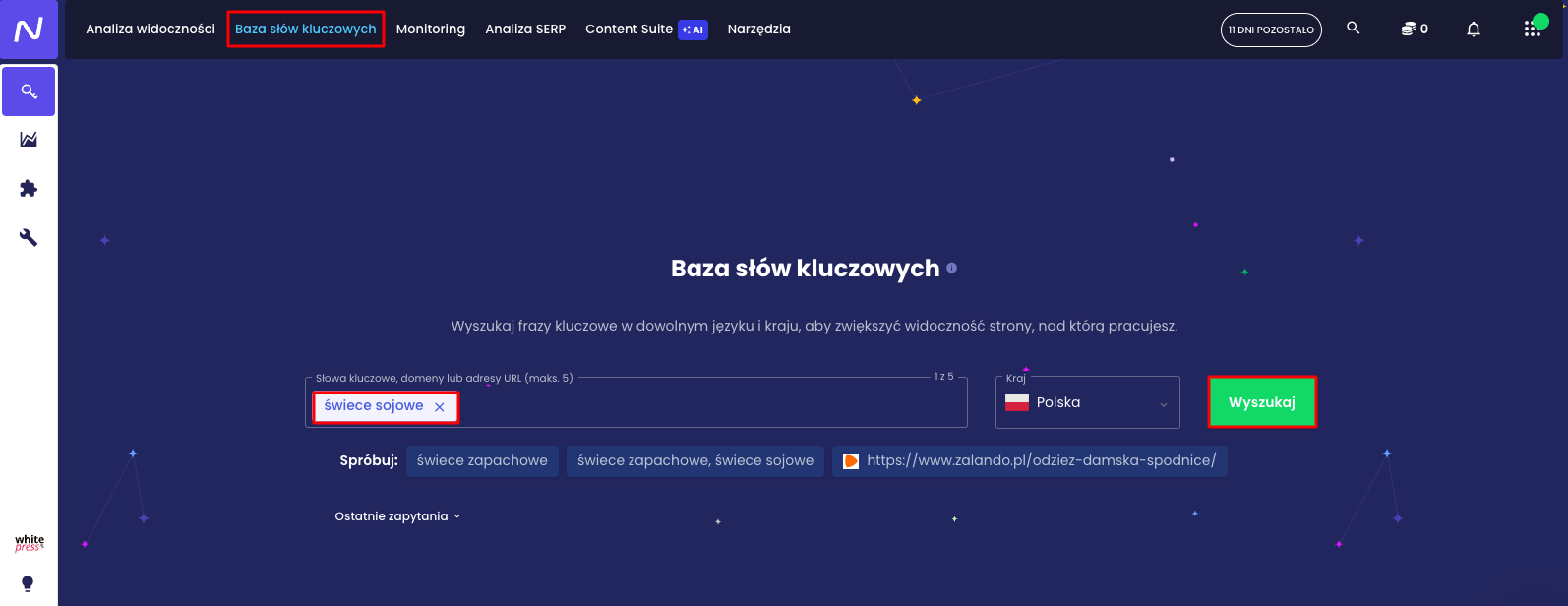
.
From the list of keywords, we select transactional-type keyword phrases, i.e. those that we will target on category and product pages. Below is an example of a few phrases we are interested in and their average monthly search volume:.
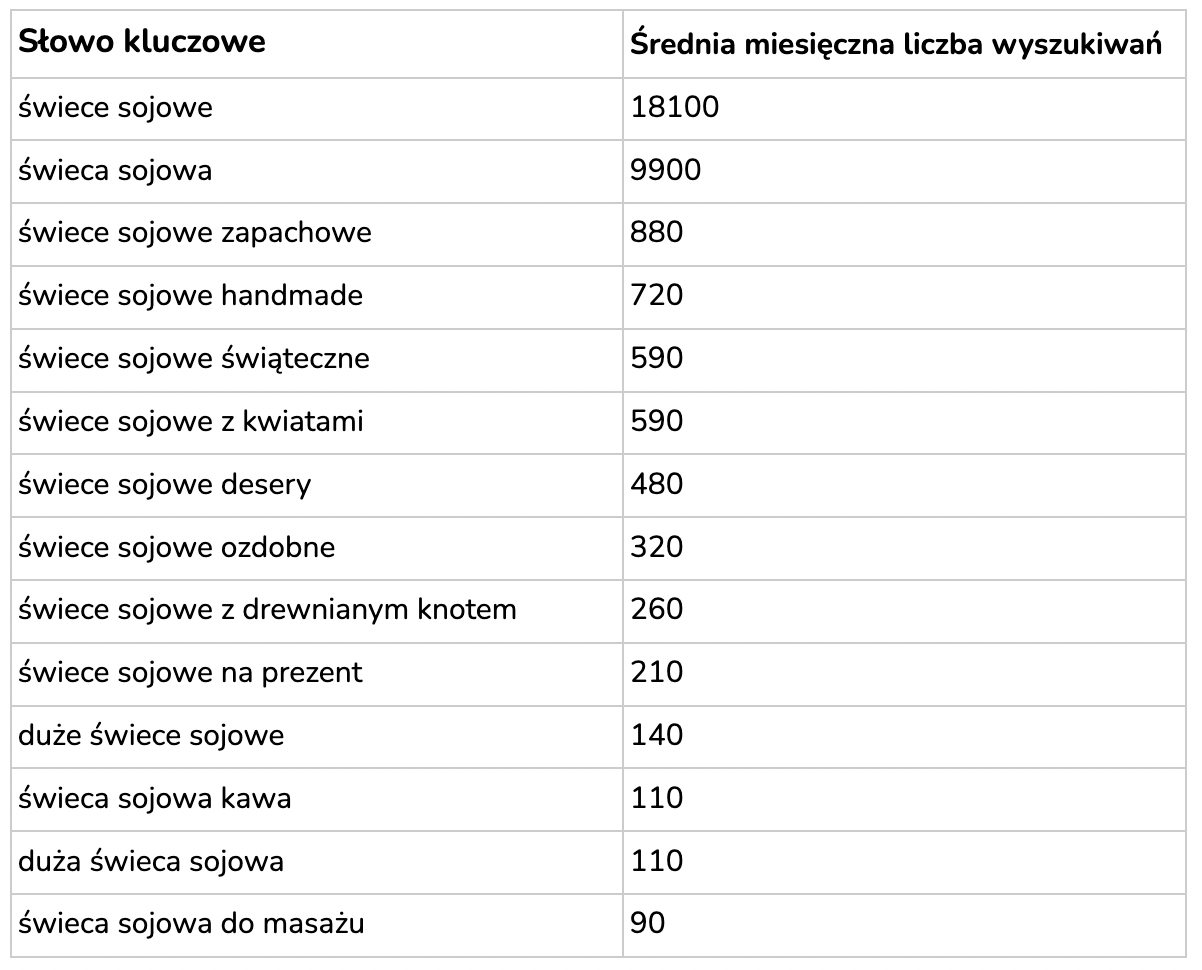
.
Another way is to perform a competitive visibility analysis in Senuto.
.
By reviewing Google search results for the phrase “soy candles,” we can identify direct competitors. The important thing here is that the competitor’s product offerings are as similar as possible to your store’s. Having a few such competitors, we can move on to analysis..
Go to “Visibility Analysis”, fill in the “Domain” field and click “Analyze”..
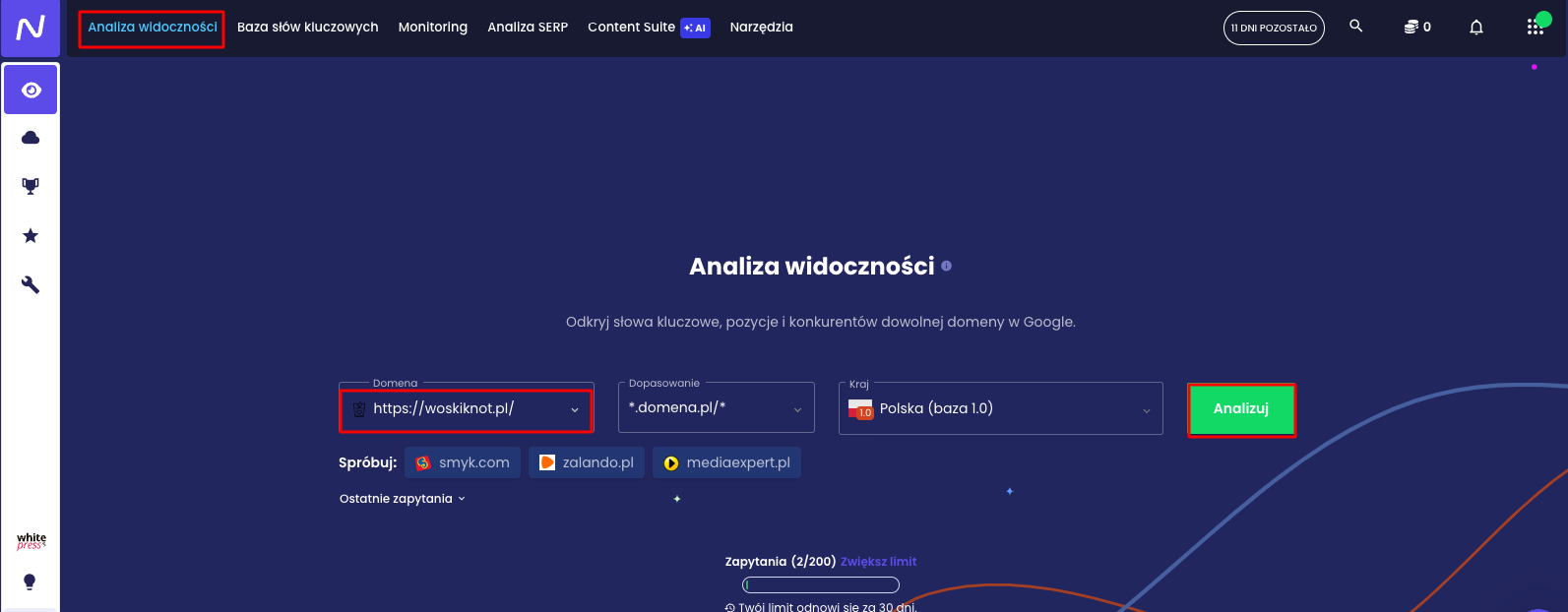
.
Then go to the “Items” tab..

.
In the bottom section of the page you will find a list of phrases for which the competitor is displayed..

.
Other tools you can use for keyword analysis are: Ahrefs, Semrush, Google Keyword Planner, or the Keyword Surfer Extension. plugin.
If you don’t have access to the tools, you can also perform this analysis by observing your competitors’ category structure or by considering autosuggestions in a search engine. Just type the phrase you want to analyze into the search engine..
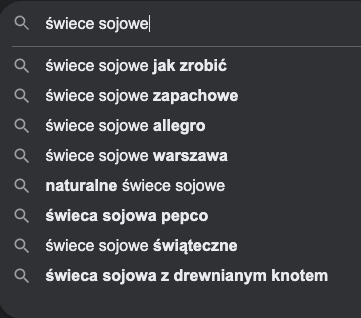
.
Followed by a space, type individual letters from a to z – this way, Google suggests completing individual letters with words..
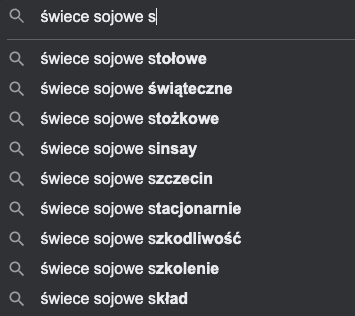
.
Using these methods, you can create a list of phrases for your new store. .
Note!Key phrases should be consistent with your store’s offerings. Do not add words to the list that do not coincide with your product range and will confuse the user..
Segmentation of keywords into thematic clusters in e-commerce
.
After performing keyword analysis, we may get the impression that some of the phrases are synonymous or otherwise describe the same thing. At this point, I recommend performing keyword grouping.
The easiest way to do such grouping is when we already have specific products and an initial outline of the category structure. We then assign phrases to individual pages and categories..
When we have a non-obvious keyword association, the best solution is to manually check the phrases in the search engine. Then by comparing the similarity of the results, we can determine whether to assign the phrases to one category or create separate subpages. .
Let’s compare the top 3 search results for the phrases:.
-
- exterior doors
.
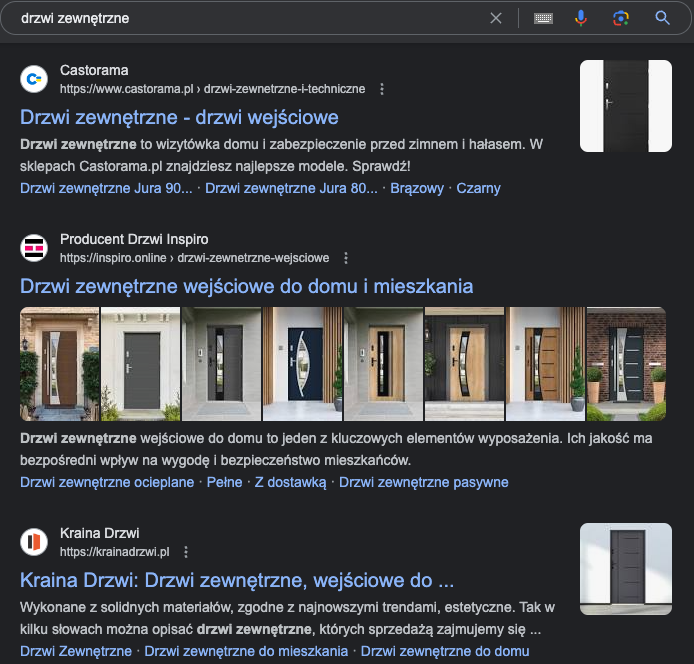
.
-
- exterior doors
.
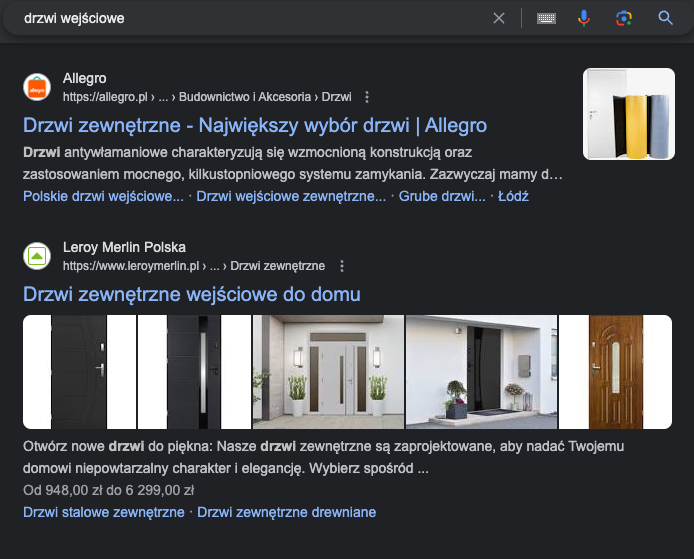
.
As you can see, Google treats the phrases as synonyms. In both cases, each top result combines input and external words. This means that both of these phrases should direct to a single page.
When comparing results for a phrase, we see two different SERPs and landing pages, then a separate subpage should be created for each phrase. This will make us analogously visible for more phrases. An example of such keywords could be “sneakers” and “sneakers”, which are often combined together. Checking the SERPs, we can see that each of these phrases should have a separate category..
Planning the structure of a category tree – from general to specific
.
After performing keyword grouping, we may notice that some of them belong to the same “family” of products. This is usually due to the level of refinement – depending on the specification of the phrase, the user will expect different products. An example would be the word “drills”. A query entered in this way is very general and will result in the display of the full range of drills.
During the analysis, however, you may still come across phrases like: impact drill, angle drill, table drill or drill/driver. At this stage, we need to decide what we want our category tree to look like.So we should divide these keywords and their hierarchy accordingly.
When it comes to this example, the matter is quite simple. We will choose “drills” as the overarching category, and its subcategories will be “impact drill”, “angle drill” and “table drill”. As for “screwdriver drills”, these are different products from drills, hence the phrase will specify a different parent category. We can still include both groups of categories, namely “drills” and “drill-screwdrivers” in the higher-level category, which will be “power tools.”
As you can see, we are differentiating into product groups here, and then breaking them down by unique features.
An example of a good division of the category tree can be found in the Tools.pl store..
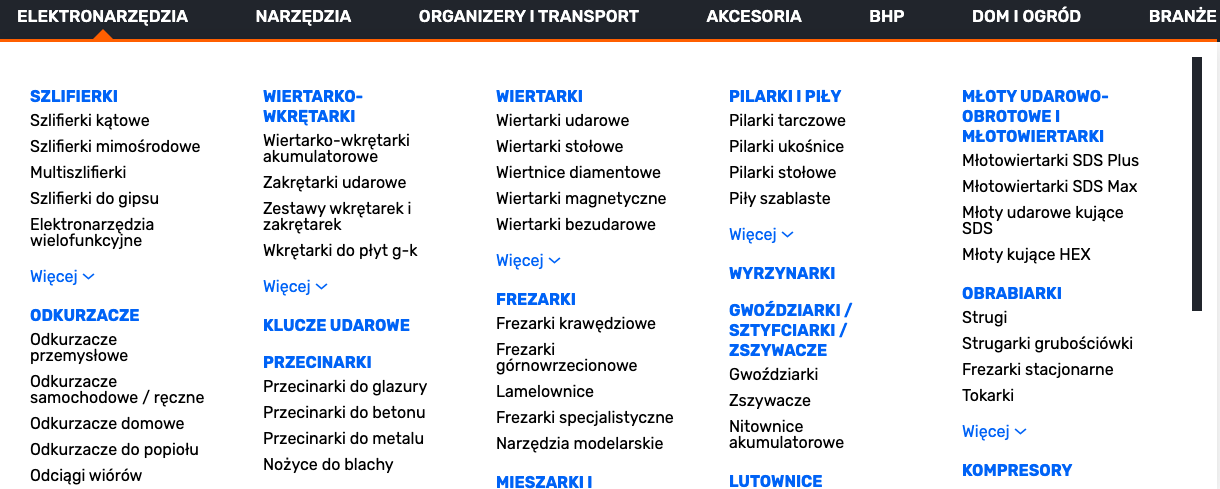
.
How to choose the main phrase for a category if we have at least two?
.
In such a situation, it is useful to suggest the number of searches per month. However, you need to remember thatdo not select phrases in the singular numberfor a category. We are talking about a category or group of products, so the plural is more appropriate.
If two phrases have high popularity as in the case of “exterior doors” and “entrance doors” we can create a hybrid to position ourselves for two phrases. An example name could be, for example, “Exterior entrance doors” or as in the Leroy Merlin website. Here we see an additional specification that these are doors for the home..

.
At this stage, your strategy should include a list of key phrases, their grouping due to subpages and an outline of the category tree. In addition, the grouping will help you select attributes based on phrases and product features. However, it is worth making sure that you are sure each phrase has a matching page. If there are missing category pages, for example, create them and match the products..
Hook up analytics tools – monitoring is essential
.
The next step is to ensure proper monitoring of results. They won’t be spectacular at first, but watching the increases will help you make smarter decisions and learn lessons for the future. In addition, analyzing your performance can motivate you to do more!.
To get started, I recommend configuring Google Search Console (GSC) and Google Analytics (GA4). These are free tools from Google that will allow you to monitor key data regarding your site’s performance. .
With GSC you can identify which phrases organic traffic is coming from, which phrases need optimization, and discover new phrases not yet included in your strategy. .
GA4 will enable you to monitor traffic and conversion data..
Another good solution would be to set up phrase monitoring. This type of monitoring checks the positions of your domain on a daily basis for selected keywords. This will make sure that you track the results even more closely. You can use monitoring in Senuto, or, for example, in the tool Seostation..
On-site SEO optimization of a new online store
.
With keyword phrases and landing page structure already determined, we can move on to including on-site optimization in your SEO strategy. These are actions you can perform on your site to improve the position of the phrases..
.
The following are some tips on what to do for your new store..
Store category descriptions
.
Make sure that each important category page has a unique description. The key here is to use optimal heading structure and saturation with key phrases. However, it is easy to over-optimize this type of description, which will make the description ineffective. .
Remember that text is first and foremost for users.When writing a description, pay attention to:.
-
- be readable and understandable,
.
-
- talked about values and helped you make a choice,
.
-
- answered frequently asked questions,
.
-
- described a group of products in a given category,
.
-
- offered assistance in product selection,
.
-
- referenced the store’s offerings in the current category and subcategories,
.
-
- referenced the most important information about the purchase process and product operation,
.
- there were no long blocks of text or phrases placed in an unnatural way.
Headline Optimization
.
On both category pages and product pages, care should be taken to ensure that headings are arranged properly. Headings on each page should be arranged hierarchically like chapters in a book. Each heading should describe what will be in the text below it..
Some tips:.
-
- The headings should form an understandable and logical sequence of information.
- Make sure that each headline has a key phrase that you care about. However, this phrase must be added in a natural and logical way.
- Apply headlines every 300 words or so.
- There should be only one H1 header on the page.
.
- Do not use headers to format text.
When checking headings, it’s a good idea to use a Google Chrome browser plugin such as Detailed SEO.

.
Optimizing meta title
.
The Title tag is one of the most important elements of On-page optimization. It is the text you see in search results when you type the phrase:.
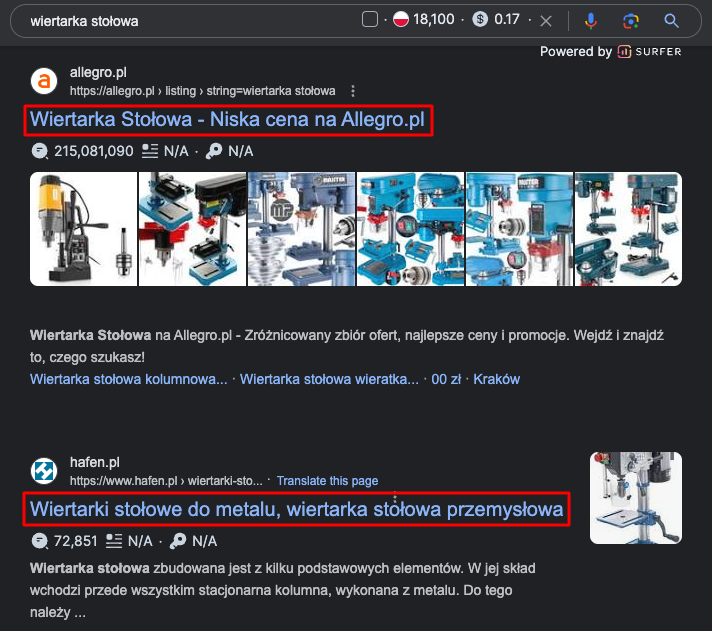
.
Some optimization tips for title:.
-
- Every page should have a unique title.
.
-
- The title should contain a key phrase.
.
-
- Title must accurately describe the product or page.
- Title should include the brand/store name,
.
-
- Recommended title length is under 600px (longer titles may be automatically clipped in search results).
- See what title your competitors have.
.
To get a sneak peek at what the title will look like in search results, you can use Google’s SERP Simulator tool, for example. .
Site map (Sitemap.xml)
.
Your site should have a sitemap.xml. This is a file that contains all the URLs you want indexed. It makes it easier for search engines to find and index your relevant pages..
Most of the most popular e-commerce engines natively generate sitemaps. You will most often find them at the default address yourjadomena.com/sitemap.xml. Verify that your store has a sitemap.xml file. If not, create one or use a dedicated extension/plugin..
Here is an example of what such a sitemap..
When creating a map, keep the following in mind:.
-
- only addresses that can be indexed should be included in the map;
.
-
- must include all major sites.
-
- main page,
.
-
- category and subcategory pages,
.
-
- product pages,
.
-
- categories and blog articles (if you have any)
.
- other relevant pages that may be important in getting traffic;
-
- after adding new pages, it should update itself;
- must include all major sites.
.
- it should be attached to Google Search Console.
You can attach the Sitemap.XML file to GSC by going to the Indexing > Site Map section:.
.
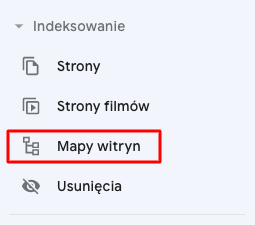
Then in the highlighted section add the URL of the map and click “Submit”. .
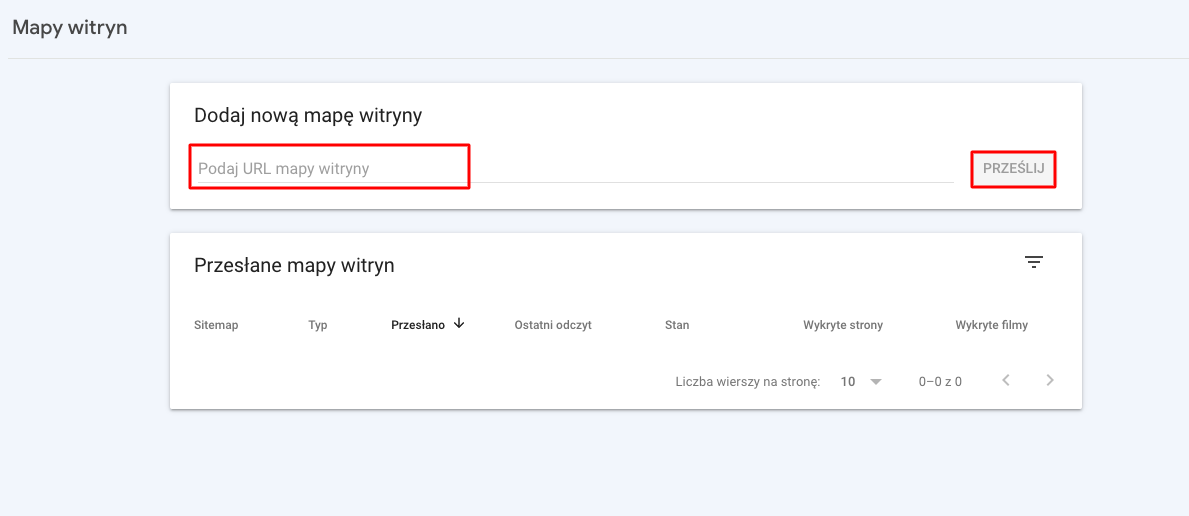 .
.
The last step is to check that the status in the “Submitted Site Maps” table has the value “Success”. This means that Google is reading the map correctly..
SLS certificate
.
Every store should be mandatorily secured with an SSL certificate. This certificate is the standard for encrypting websites these days, which ensures the confidentiality of data transmitted over the Internet. .
Securing data is especially important when users make payments and leave sensitive data on your site. Lack of SSL will cause browsers to display an alert about an unsafe site, and antivirus programs may block access to it. .
What’s more, HTTPS, the version of HTTP that uses SSL for encryption, is pointed out by Google as one of the ranking signals. .
By clicking the icon next to the site’s URL, you can check if the connection is secure and if the site has a valid SSL certificate. .

.
Structured data
.
Structured data are pieces of code that organize specific information about a page to make it easier for search engines to understand.
Read also: Schema and benefits of structured data..
For a new online store, I particularly recommend using the following schema tags:.
- Organization – on the home page.
- Product -on product pages.
- BreadcrumbList – on all pages except the home page.
- Article – on blog pages.
After implementing schema tags, their correctness can be checked using validator..
Internal linking
.
Through internal linkingusers and search engine robots can navigate your site. In addition, linking allows you to transfer “SEO power” to other sites.
For online stores, we can distinguish several elements of linking that are essential:.
1. Main menu links – in this section, link the most important categories and category groups, as well as important pages such as contact or shopping cart..
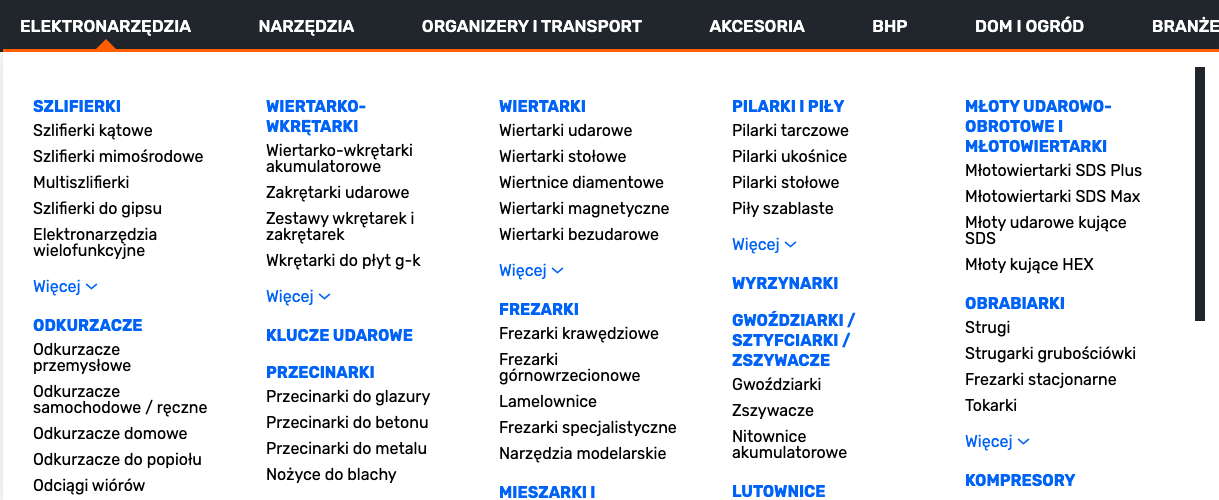
.
2. Side menu – in this section you can sublink subcategories or categories related to the page..
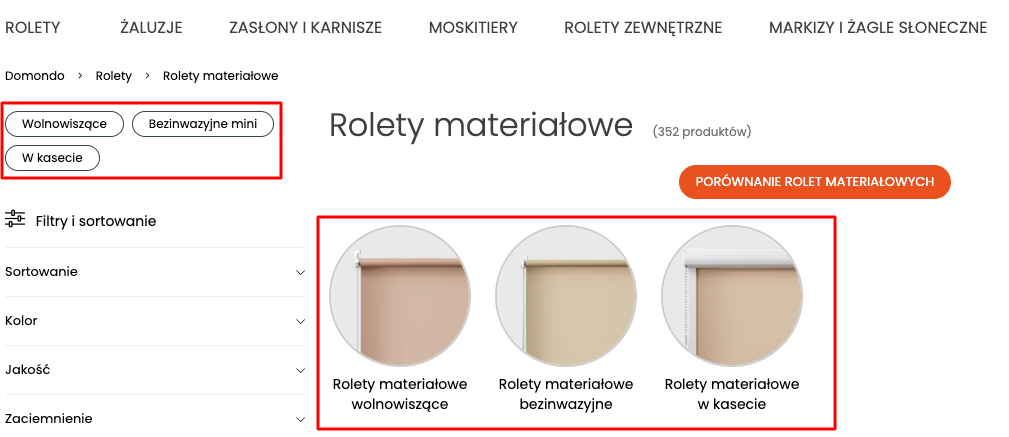
.
3. Crumb menu links – the path to a given page..

.
4. Related products – section on product cards with links to replacements, equipment or similar products..
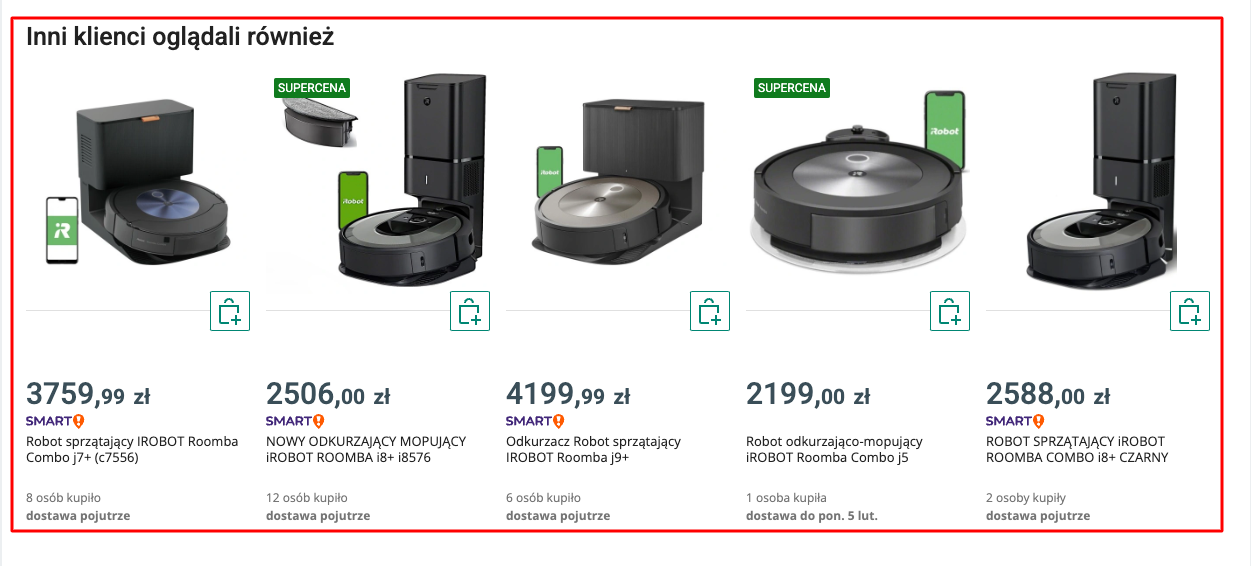
.
5. Pagination – linking between consecutive lists of products in categories..
6. Links from the content of category and article descriptions..
7. Links on the home page and in the footer..
By implementing the above elements on your site, you will ensure better internal linking and make your site easier to navigate..
Blog as support in SEO strategy for new store
.
When planning an SEO strategy, it’s worth including blog content creation. Publishing articles on a blog from the very beginning of your store has a number of benefits:.
- The first is that we position ourselves for information-type phrases. By doing so, we increase the number of keywords for which the store is visible.
- Through the blog we help users solve their problems at different stages of their purchase path – so we gain their trust.
- Articles have much less competition than product pages. Often to boot it is an easier form of traffic acquisition for a store.
- A blog for an online storecan be a new source of conversions. With a well-written article with highlighted products, we can gain a chance to make sales.
- Articles can reinforce other sub-pages (categories and products) with internal links.
Last but not least – link building in a new online store
.
The last element of an SEO strategy is the acquisition of external links. These are links leading from other sites to your store. It is recommended to regularly acquire new quality links in order to improve your site’s rankings.
It is advisable to seek links from partners and suppliers first. Link your site on social media and Google My Business. Subsequently, it is worth acquiring NAP (Name, Address, Phone) type links. These types of links and online mentions of your company will help your new site get discovered. However, don’t overdo the quantity here, lest the links be considered spam. .
After observing indexing and the first hits on the site, you can continue acquiring external links on a larger scale.To start, these can even be single external links from sponsored articles. Sites offering such links can be found, for example, on the Whitepress platform. Remember to check beforehand whether the domain from which you want to acquire the link is of high quality..
SEO analysis of a new store – is it worth conducting an audit?
.
An SEO audit is a document that evaluates the optimization of a site for high visibility in search engines. After it is performed, we receive a list of specific recommendations to be implemented to improve the site’s SEO. .
In the case of a new store, it is worth conducting an SEO audit even before it is launched. It will allow you to point out errors on the site and develop an SEO strategy more effectively. Implementing the changes associated with the audit will most often increase traffic..
SEO strategy for a new store – a few words at the end
.
You are now ready to develop an SEO strategy for your new online store. .
When creating a strategy, keep in mind its most important elements, such as:.
-
- analysis of key phrases,
.
-
- matching landing pages to phrases,
.
-
- add missing pages,
.
-
- regular on-site optimization,
.
-
- obtaining external links,
.
- monitoring the results of your efforts.
The next step is to subjectively evaluate your actions and their impact on positions and organic traffic. This way you will be able to draw conclusions and improve your SEO strategy on an ongoing basis. Keep in mind that SEO takes time and, most importantly, regular and consistent action to achieve the goals set in your strategy.
 Wojciech Mazur
Wojciech Mazur